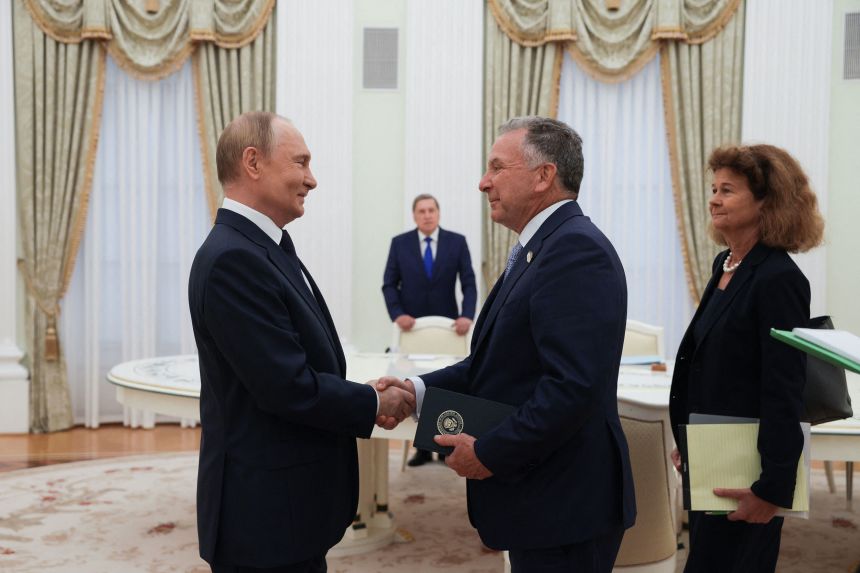US President Donald Trump warned Wednesday that more punishment was coming for countries buying Russian energy products after slapping a 25% tariff on India that is supposed to go into effect Thursday.
“You’re going to see a lot more. So this is a taste,” he said in the Oval Office. “You’re going to see a lot more. You’re going to see so much secondary sanctions.”
The move is part of Trump’s high-stakes effort to cripple Russia’s economy over its war in Ukraine. He had set a Friday deadline for Russian President Vladimir Putin to make peace before imposing that economic punishment.
Previous rounds of US sanctions, including under Trump’s predecessor Joe Biden, knocked Russia’s economy but have not stopped Putin’s war machine.
The strategy marks an escalation in Trump’s use of tariffs, his signature second-term weapon. He has previously used them to pursue a sprawling agenda, from protecting US manufacturing to pressuring foreign governments on policy.
These “secondary tariffs,” however, are being used to force third-party nations into a choice: sever ties with a US adversary or risk further penalties.

While Trump voiced optimism about progress made during a meeting Wednesday between Putin and US envoy Steve Witkoff, he suggested it wasn’t enough to stave off the new sanctions.
The top purchaser of Russian energy is China, with which Trump is working to negotiate a new trade deal. US officials have described significant progress on those talks. But Trump did not rule out applying the new secondary sanctions on Beijing, despite the potential for scuttling the trade discussions.
“One of them could be China,” he said. “It may happen. I don’t know. I can’t tell you yet.”
China previously said it will “take energy supply measures that are right for China based in our national interests.”
“Tariff wars have no winners,” foreign ministry spokesperson Guo Jiakun said during a news briefing last week. “Coercion and pressuring cannot solve problems. China will firmly safeguard its own sovereignty, security and development interests.”
The US and China are still working to extend a trade truce that held back triple-digit tariffs, which is set to expire on August 12.
China’s exports accelerated before that looming deadline, beating expectations to grow 7.2% in July from a year earlier – a faster pace than June’s 5.8%.
Trump’s secondary tariff threats have escalated tensions between Washington and another of its most important trading partners.
The US president announced sweeping and substantial tariffs on India Wednesday, making the penalties imposed on the world’s fifth-largest economy among the highest the US charges.
In addition to a 25% tariff set to go into effect Thursday, Trump also announced a 25% tariff on India that will go into effect later this month as punishment for importing Russian oil and gas.
Indian Prime Minister Narendra Modi conceded Thursday that he may “pay a heavy price” as he defended his decision not to bow to US trade threats and face steep tariffs as a result.
“For us, the interest of our farmers is our top priority. India will never compromise on the interests of farmers, fishermen and dairy farmers. I know personally, I will have to pay a heavy price for it, but I am ready for it,” he said.
“We have already made clear our position on these issues, including the fact that our imports are based on market factors and done with the overall objective of ensuring the energy security of 1.4 billion people of India,” a statement from India’s Ministry of External Affairs said.
“It is therefore extremely unfortunate that the US should choose to impose additional tariffs on India for actions that several other countries are also taking in their own national interest.”
